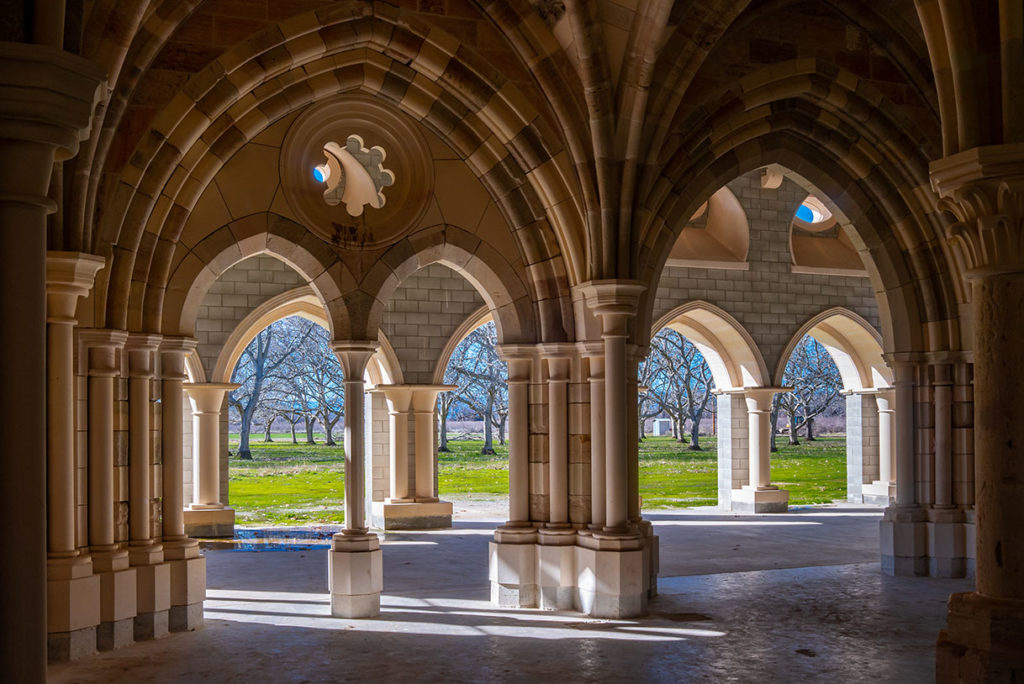Two-thirds of the chapter house of the Abbey of Our Lady of Clairvaux, situated in Vina, California, is composed of stones from the 800-year-old chapter house of the Cistercian monastery of Santa Maria de Ovila that once stood in Trillo, Guadalajara, in Spain. As Wikipedia recounts,
William Randolph Hearst purchased the chapter house of the old Spanish monastery in 1925 for $97,000, dismantled it, and had the stones shipped to California in 1931, intending to include them in Wyntoon, a grand home he was building in remote Northern California. Instead, Hearst gave the stones to the city of San Francisco as part of an arrangement to abate taxes that he owed. The stones sat in San Francisco’s Golden Gate park for decades. In 1955, Father Thomas Davis, abbot of the newly-founded abbey of New Clairvaux, noticed the stones in the park. From 1979 to 1983, the art historian Margaret Burke studied the stones to plan an eventual restoration project. Father Thomas Davis eventually made a deal with the city to get the 1,300 leftover stones and handle the reconstruction of the church. In 1994, the stones were given to the abbey.
The abbey’s website offers a page on Cistercian architecture, along with an account of the construction/reconstruction of the chapter house. Read it here.
Elsewhere in this season of arcCA DIGEST, we present the story of a more profane utilization of Hearst’s castoffs, in “Henry VII at the Cannery,” by Chuck Davis, FAIA.
Photo © Frank Schulenburg / CC BY-SA 3.0, via Wikimedia Commons.






